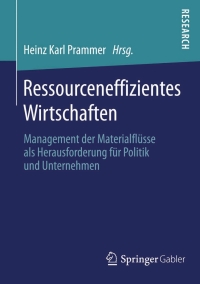Answered step by step
Verified Expert Solution
Question
1 Approved Answer
Thank you soooooo much! Take the following information on a company, and say what assets the company has and where the money came from to


Thank you soooooo much!
Take the following information on a company, and say what assets the company has and where the money came from to own those assets (its liabilities and equity) at the end of two years of operation (assume the principal repayment of debt has been made for year 2): The company has gross sales of $48 million per year, and the pattern of sales is even, i.e., there is no cyclical pattern of sales. Customers are large firms with a typical large-firm payment pattern. COGS for the business is 60% and is material only; all labour costs are in SG&A. Monthly payroll is $200,000. There is enough raw material on hand to support one month of manufacturing, and two months of actual production of finished goods is in the warehouse (remember that finished goods in inventory are carried on the books at the value of COGS, not the expected sale price). The company pays its suppliers 30 days after goods are received. The owners started the business with an initial capital injection of $5.6 million 25 months ago The company borrowed $3 million of long-term debt, with the principal repayable in 10 equal annual payments. The company bought $8 million in assets at start-up and picked a depreciation period of 10 years. No additional assets have been purchased. In the first two years of the business, the company had a cumulative net income of $1,800,000 and paid dividends of $300,000 ($150,000 per year) to the owners. The business has a short-term credit line that runs positive or negative based on the fluctuations of the business (just like a personal chequing account). Prepare a balance sheet, and use it to answer the following questions: 1. What assets does the business have? Which is larger: current assets or fixed? 2. How much short-term debt does the business have? 3. How much working capital does the business have? 4. If the cumulative dividend over two years had been $1,00,000 instead of $300.000 (if all the profits had been taken out of the business as dividends), what would the short-term debt be? Would working capital still be positive? 5. If you cut the inventory in half by a vigorous program of "just in time" manufacturing and shipping, by how much would your bank borrowings drop? Would working capital change? Take the following information on a company, and say what assets the company has and where the money came from to own those assets (its liabilities and equity) at the end of two years of operation (assume the principal repayment of debt has been made for year 2): The company has gross sales of $48 million per year, and the pattern of sales is even, i.e., there is no cyclical pattern of sales. Customers are large firms with a typical large-firm payment pattern. COGS for the business is 60% and is material only; all labour costs are in SG&A. Monthly payroll is $200,000. There is enough raw material on hand to support one month of manufacturing, and two months of actual production of finished goods is in the warehouse (remember that finished goods in inventory are carried on the books at the value of COGS, not the expected sale price). The company pays its suppliers 30 days after goods are received. The owners started the business with an initial capital injection of $5.6 million 25 months ago The company borrowed $3 million of long-term debt, with the principal repayable in 10 equal annual payments. The company bought $8 million in assets at start-up and picked a depreciation period of 10 years. No additional assets have been purchased. In the first two years of the business, the company had a cumulative net income of $1,800,000 and paid dividends of $300,000 ($150,000 per year) to the owners. The business has a short-term credit line that runs positive or negative based on the fluctuations of the business (just like a personal chequing account). Prepare a balance sheet, and use it to answer the following questions: 1. What assets does the business have? Which is larger: current assets or fixed? 2. How much short-term debt does the business have? 3. How much working capital does the business have? 4. If the cumulative dividend over two years had been $1,00,000 instead of $300.000 (if all the profits had been taken out of the business as dividends), what would the short-term debt be? Would working capital still be positive? 5. If you cut the inventory in half by a vigorous program of "just in time" manufacturing and shipping, by how much would your bank borrowings drop? Would working capital changeStep by Step Solution
There are 3 Steps involved in it
Step: 1

Get Instant Access to Expert-Tailored Solutions
See step-by-step solutions with expert insights and AI powered tools for academic success
Step: 2

Step: 3

Ace Your Homework with AI
Get the answers you need in no time with our AI-driven, step-by-step assistance
Get Started


